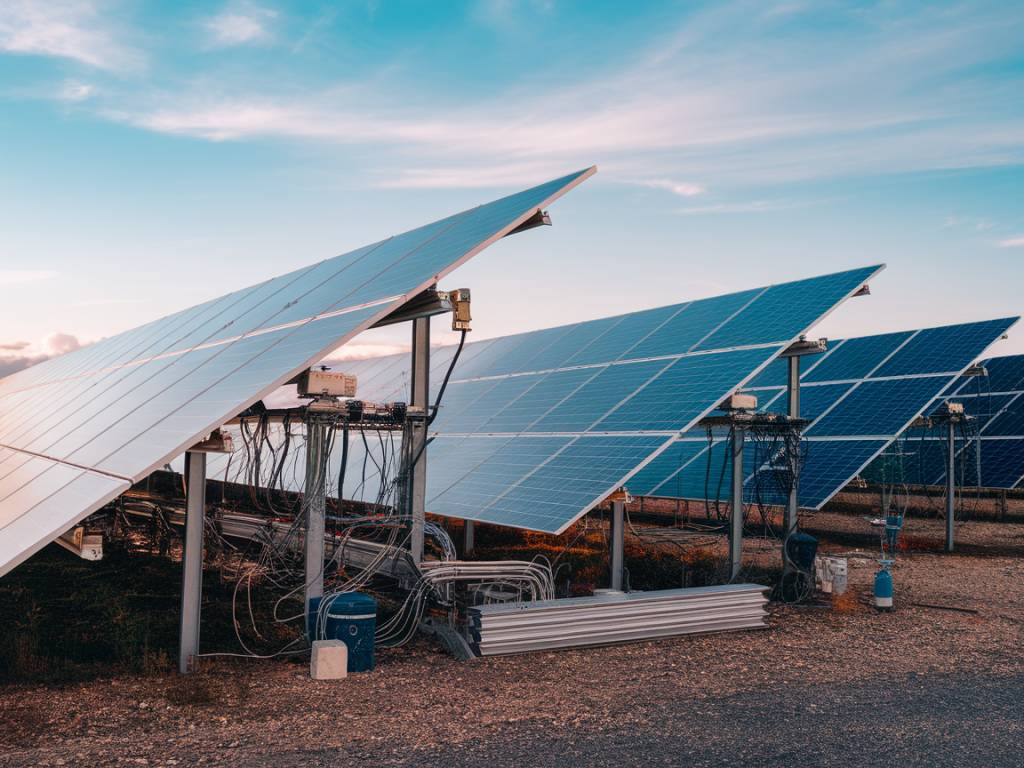The Marriage of Blockchain and Renewable Energy
In a world increasingly leaning on decentralization and digital solutions, blockchain has emerged as a groundbreaking technology with applications across numerous industries. While it’s frequently associated with cryptocurrency, blockchain’s potential extends far beyond Bitcoin. One area where it’s generating significant buzz is the renewable energy market. But what happens when these two innovative spheres intersect? The possibilities are nothing short of transformative.
Why Blockchain Matters to Renewable Energy
Before diving into specifics, let’s address the elephant in the room: Why should the renewable energy sector care about blockchain? At its core, blockchain is a decentralized, tamper-proof ledger. It offers transparency, traceability, and efficiency—qualities sorely needed in the increasingly complex energy systems of today.
Imagine a world where renewable energy certificates (RECs) are automatically distributed and validated, where peer-to-peer (P2P) energy trading happens with minimal intermediaries, and where energy sources are transparent to consumers. Blockchain can make these scenarios a reality. Sounds like science fiction? Not anymore.
Decentralizing Energy Markets with Blockchain
Traditional energy markets have long relied on centralized systems, with utilities acting as intermediaries between producers and consumers. While functional, this system has its flaws: inefficiencies, lack of transparency, and limited incentives for small-scale producers.
Blockchain flips this model on its head by enabling decentralized energy markets. Homeowners with solar panels, for instance, can sell excess electricity directly to their neighbors through blockchain-enabled platforms, bypassing the middleman. The result? Faster transactions, fairer pricing, and empowered prosumers (producer-consumers).
Take Power Ledger, an Australian company leading the charge in blockchain-based energy trading. Their platform allows users to trade solar energy seamlessly, creating local energy marketplaces that are efficient and transparent. Blockchain tracks each transaction, ensuring every kilowatt-hour exchanged is accounted for.
Improving Transparency in Renewable Energy Supply Chains
Have you ever wondered if the “green” electricity you’re paying for is actually renewable? The renewable energy sector is no stranger to challenges regarding trust. Verifying the origins of energy and ensuring that renewable energy certificates (RECs) are valid are far from straightforward tasks.
Blockchain can change all that. By providing an immutable ledger, it makes tracking the journey of energy from source to consumer possible. For instance, a blockchain-based system could verify whether the hydropower you’re purchasing was genuinely generated by a dam, or whether the solar energy in your contract originated from a legitimate solar farm.
IBM and Energy Blockchain Labs have already proven this concept feasible through a pilot project in China. Their platform allows for real-time tracking and validation of carbon assets, streamlining processes and building trust among consumers and stakeholders alike.
Enabling Peer-to-Peer (P2P) Energy Trading
The rise of residential renewable energy systems like rooftop solar panels brings new opportunities for localized energy trading. Blockchain is poised to serve as the backbone technology for P2P energy trading, enabling individuals to directly buy and sell energy within their communities.
Imagine you’ve installed solar panels on your roof and generated more electricity than you need. Blockchain allows you to sell that excess energy to your neighbor without the involvement of a utility company. Smart contracts—self-executing agreements coded into the blockchain—automatically execute these transactions based on predefined conditions. The result? Lower costs, reduced energy waste, and stronger community links.
Unlocking the Potential for Microgrids
Microgrids, small-scale localized grids that can operate independently or connected to larger grids, are a growing trend in renewable energy infrastructure. Blockchain and microgrids together hold immense potential to redefine local energy distribution.
For example, the Brooklyn Microgrid in New York utilizes blockchain to manage local energy trading between residents. Solar energy generated on individual rooftops is shared seamlessly via the microgrid, with blockchain tracking each kilowatt-hour. This approach fosters energy resilience and empowers communities to take control of their energy needs.
The Challenges That Remain
While the blockchain and renewable energy marriage looks promising, the road ahead isn’t without obstacles. For one, the energy consumption of blockchain itself—particularly public blockchain networks like Bitcoin—has raised eyebrows. However, more energy-efficient blockchain protocols such as Proof-of-Stake (PoS) are addressing these concerns.
Another challenge lies in adoption. Renewable energy is already a relatively nascent field, and integrating blockchain into its framework requires significant investment, collaboration, and regulatory support.
Finally, education remains a barrier. Many players in the energy sector, from policymakers to utility companies, are still unfamiliar with blockchain technology and its potential benefits. Overcoming this information gap is crucial for widespread implementation.
Looking Ahead: A Future Fueled by Collaboration
So, where do we go from here? The answer lies in collaboration. To fully leverage the intersection of blockchain and renewable energy, we need active partnerships between tech innovators, governments, and energy companies. Regulation will play a vital role in fostering innovation while ensuring consumer protection.
What’s most exciting about this intersection is how it empowers individuals. Whether it’s a family selling surplus solar power or a community managing their microgrid, blockchain facilitates a decentralized and democratized energy future. And isn’t that the ultimate goal? A world where clean energy is not only accessible but also justly distributed—one block at a time.






More Stories
Powering Data Centers Sustainably: The Role of Renewable Energy in the Digital Age
Integrating Biophilic Design with Green Technology: A New Paradigm for Sustainable Living
How virtual reality is transforming modern manufacturing processes